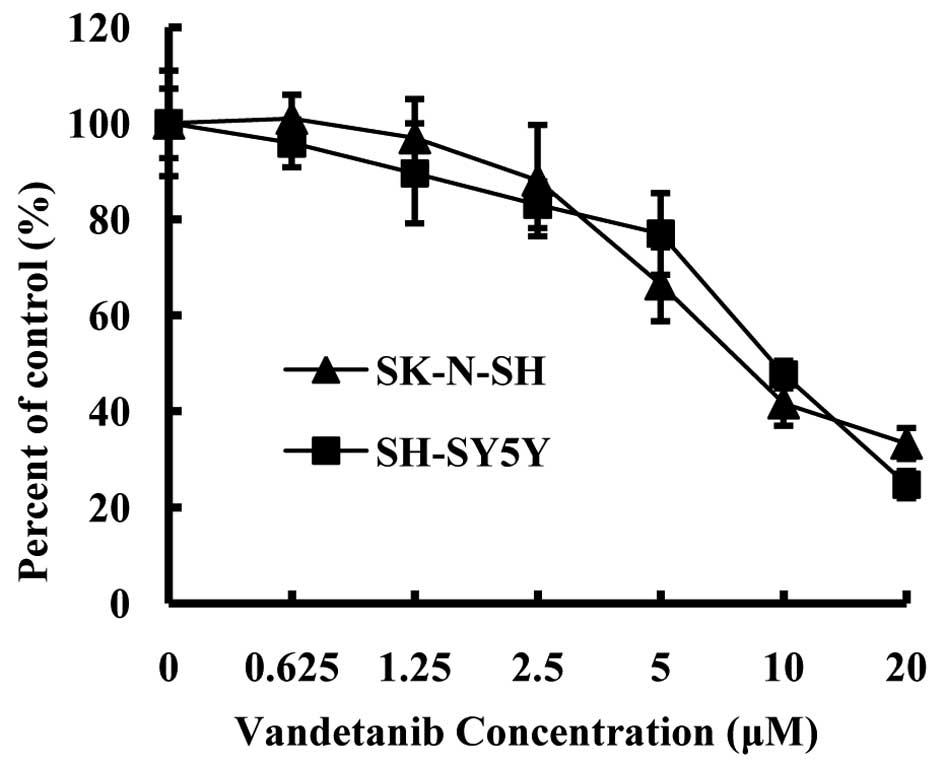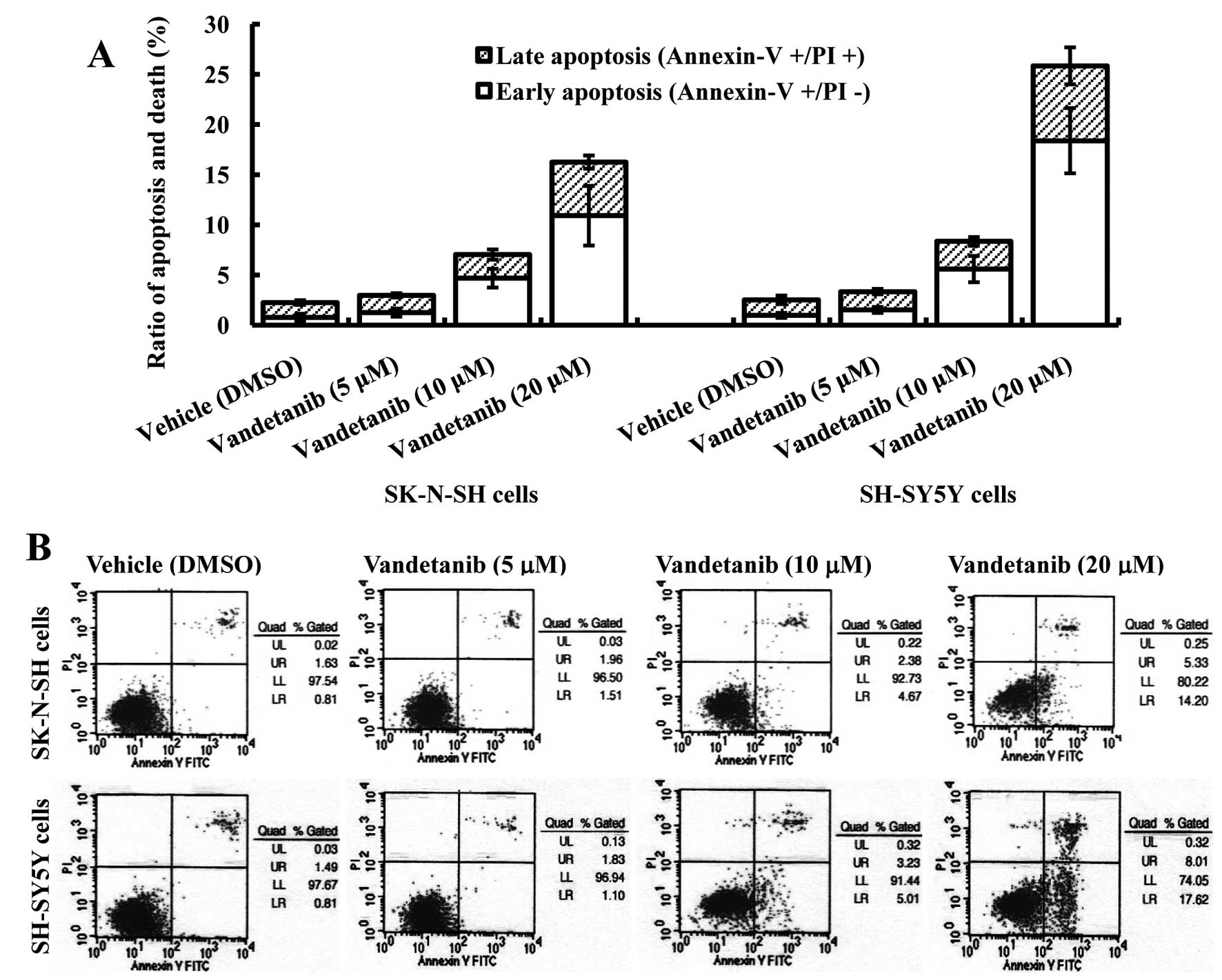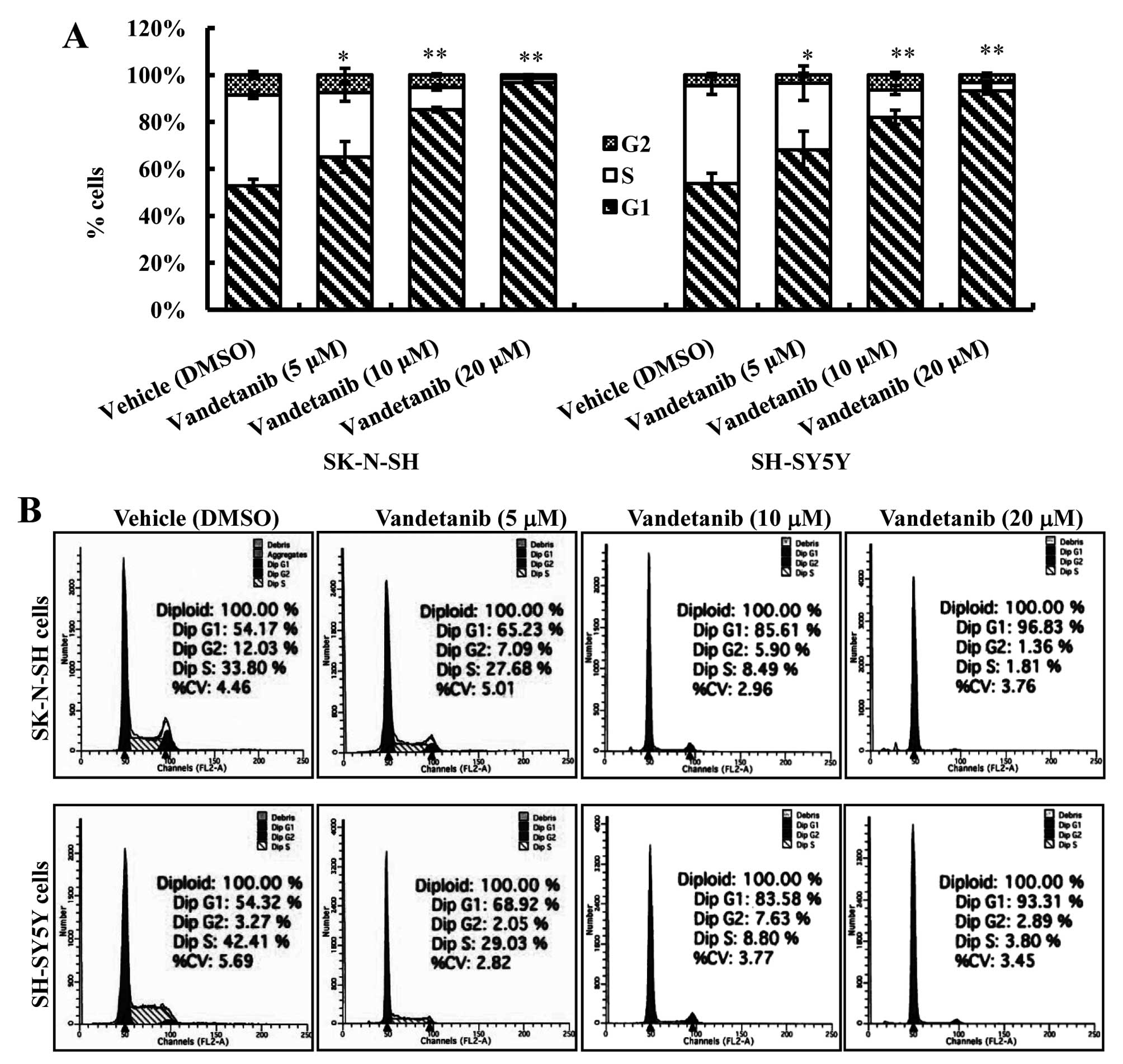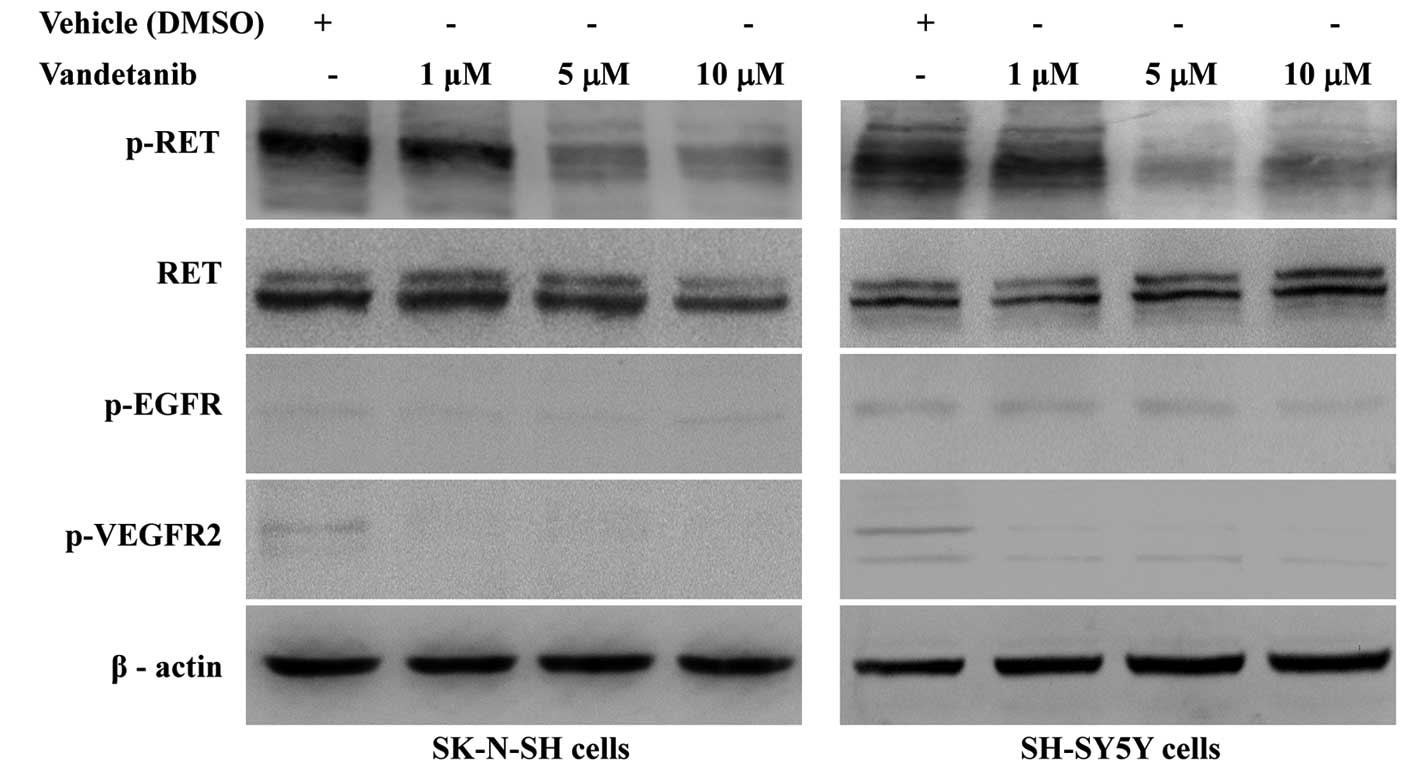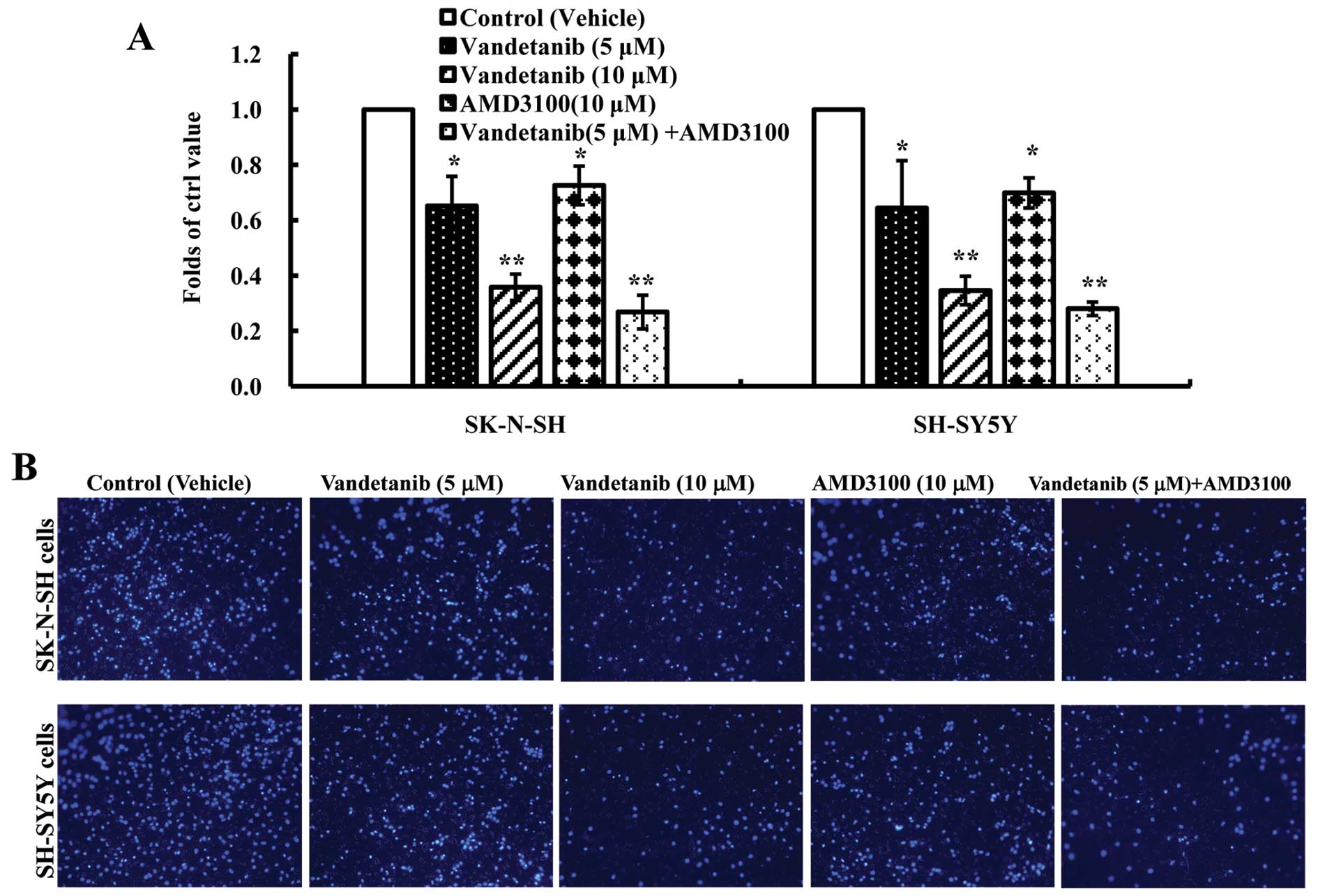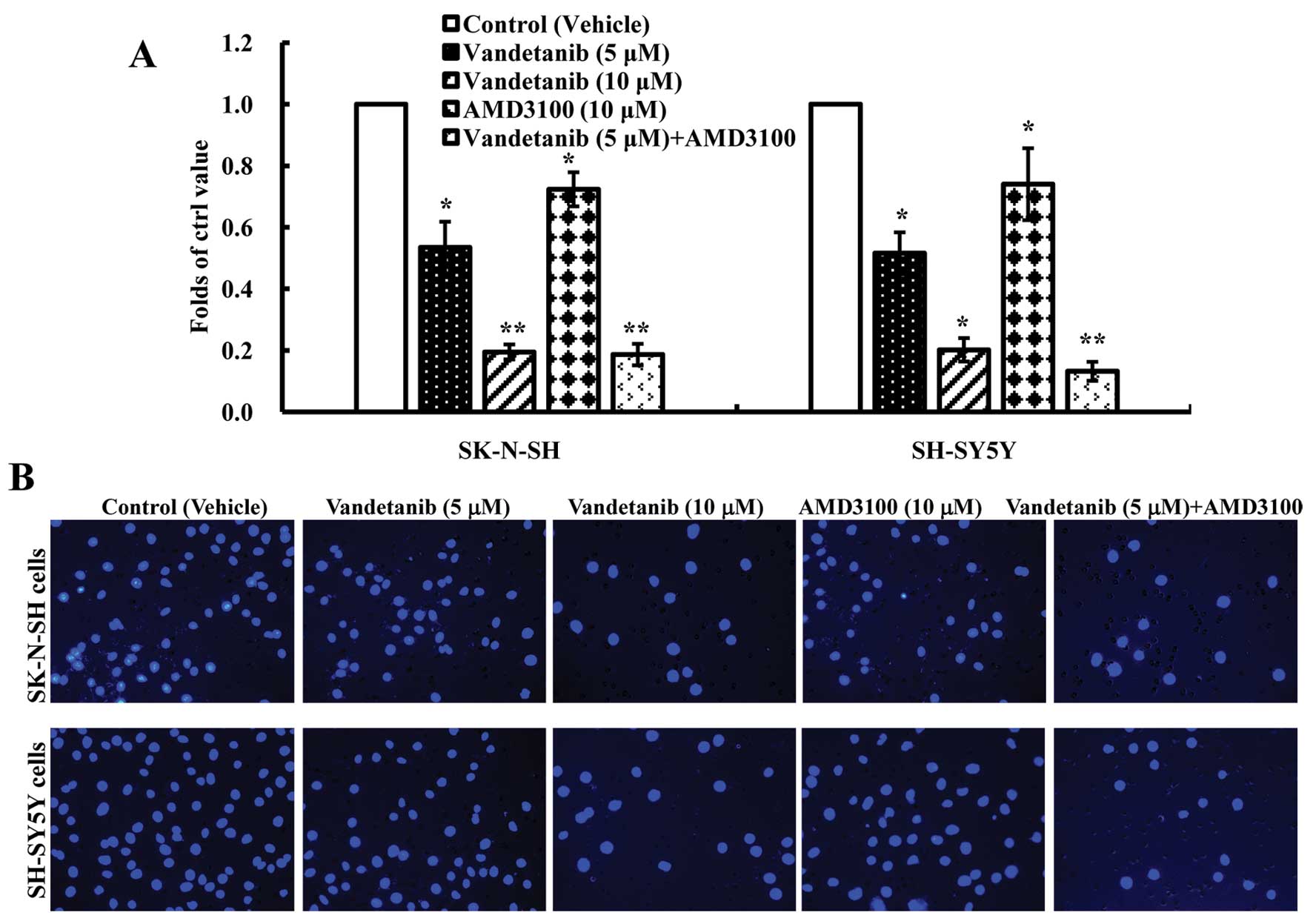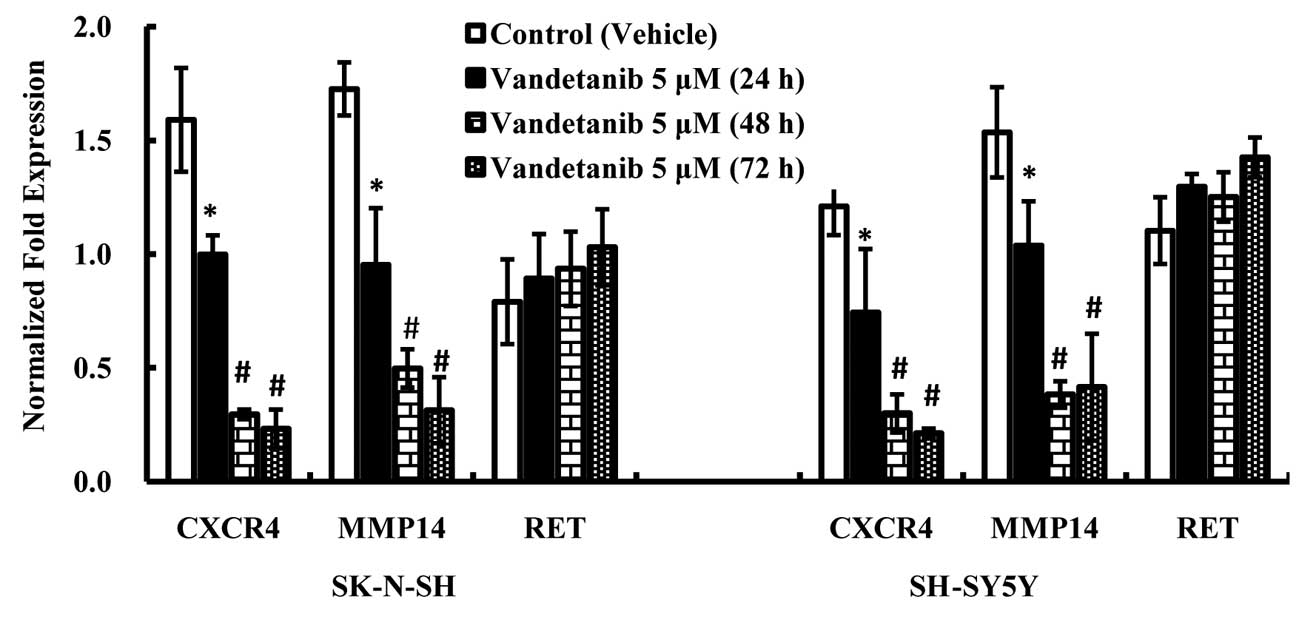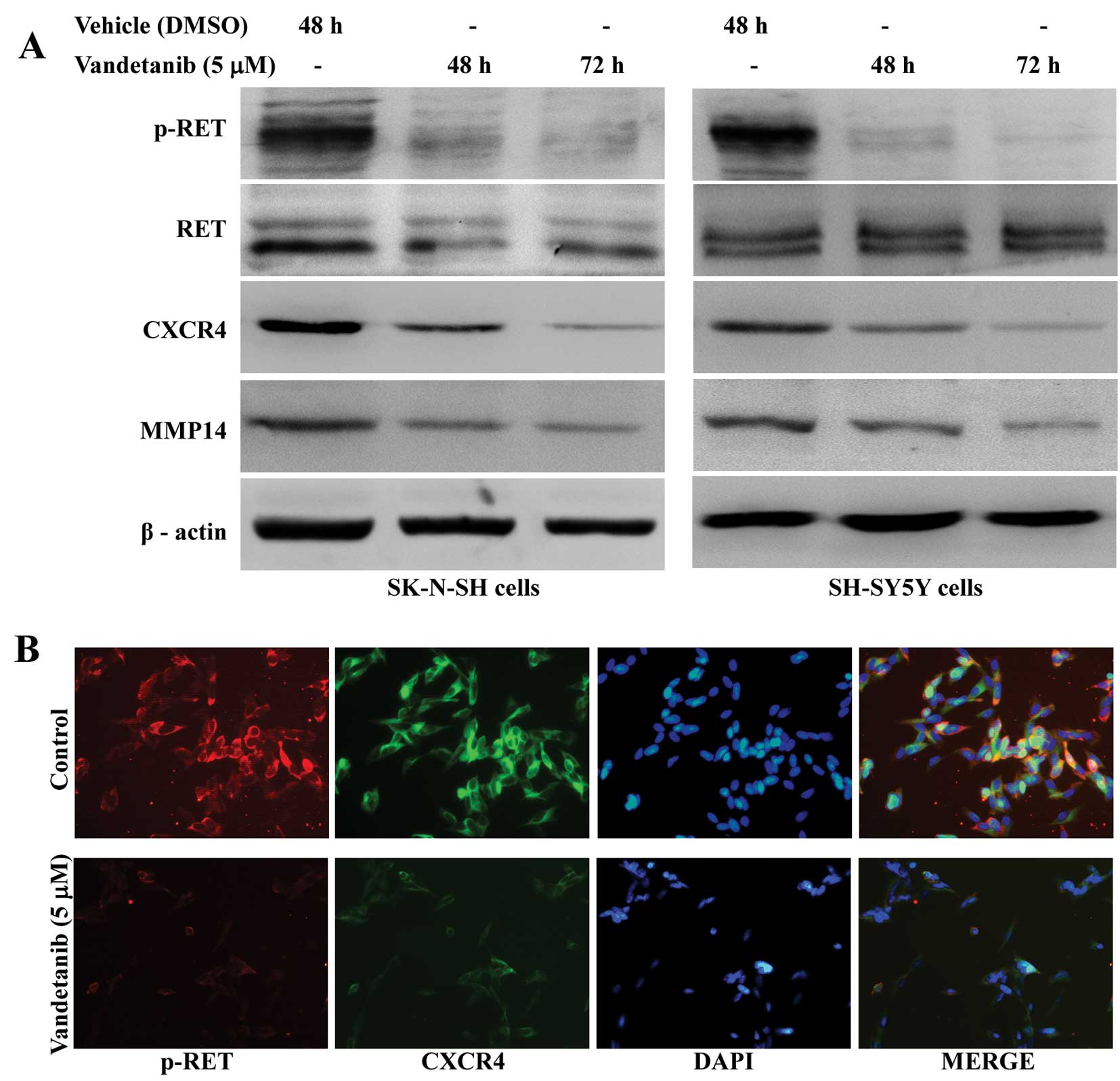|
1
|
Matthay KK, Reynolds CP, Seeger RC, et al:
Long-term results for children with high-risk neuroblastoma treated
on a randomized trial of myeloablative therapy followed by
13-cis-retinoic acid: a children’s oncology group study. J
Clin Oncol. 27:1007–1013. 2009. View Article : Google Scholar : PubMed/NCBI
|
|
2
|
Zage PE, Kletzel M, Murray K, et al:
Outcomes of the POG 9340/9341/9342 trials for children with
high-risk neuroblastoma: a report from the Children’s Oncology
Group. Pediatr Blood Cancer. 51:747–753. 2008.PubMed/NCBI
|
|
3
|
Marshall GM, Peaston AE, Hocker JE, et al:
Expression of multiple endocrine neoplasia 2B RET in neuroblastoma
cells alters cell adhesion in vitro, enhances metastatic behavior
in vivo, and activates Jun kinase. Cancer Res. 57:5399–5405.
1997.PubMed/NCBI
|
|
4
|
Futami H and Sakai R: RET protein promotes
non-adherent growth of NB-39-nu neuroblastoma cell line. Cancer
Sci. 100:1034–1039. 2009. View Article : Google Scholar : PubMed/NCBI
|
|
5
|
Arighi E, Borrello MG and Sariola H: RET
tyrosine kinase signaling in development and cancer. Cytokine
Growth Factor Rev. 16:441–467. 2005. View Article : Google Scholar : PubMed/NCBI
|
|
6
|
Lu BC, Cebrian C, Chi X, et al: Etv4 and
Etv5 are required downstream of GDNF and Ret for kidney branching
morphogenesis. Nat Genet. 41:1295–1302. 2009. View Article : Google Scholar : PubMed/NCBI
|
|
7
|
Ma M, Ye JY, Deng R, Dee CM and Chan GC:
Mesenchymal stromal cells may enhance metastasis of neuroblastoma
via SDF-1/CXCR4 and SDF-1/CXCR7 signaling. Cancer Lett. 312:1–10.
2011. View Article : Google Scholar : PubMed/NCBI
|
|
8
|
Uygur B and Wu WS: SLUG promotes prostate
cancer cell migration and invasion via CXCR4/CXCL12 axis. Mol
Cancer. 10:1392011. View Article : Google Scholar : PubMed/NCBI
|
|
9
|
Wendel C, Hemping-Bovenkerk A, Krasnyanska
J, et al: CXCR4/CXCL12 participate in extravasation of
metastasizing breast cancer cells within the liver in a rat model.
PLoS One. 7:e300462012. View Article : Google Scholar : PubMed/NCBI
|
|
10
|
Bialek J, Kunanuvat U, Hombach-Klonisch S,
et al: Relaxin enhances the collagenolytic activity and in vitro
invasiveness by upregulating matrix metalloproteinases in human
thyroid carcinoma cells. Mol Cancer Res. 9:673–687. 2011.
View Article : Google Scholar
|
|
11
|
Johnson JL, Pillai S, Pernazza D, Sebti
SM, Lawrence NJ and Chellappan SP: Regulation of matrix
metalloproteinase genes by E2F transcription factors: Rb-Raf-1
interaction as a novel target for metastatic disease. Cancer Res.
72:516–526. 2012. View Article : Google Scholar : PubMed/NCBI
|
|
12
|
Carlomagno F, Vitagliano D, Guida T, et
al: ZD6474, an orally available inhibitor of KDR tyrosine kinase
activity, efficiently blocks oncogenic RET kinases. Cancer Res.
62:7284–7290. 2002.PubMed/NCBI
|
|
13
|
Wedge SR, Ogilvie DJ, Dukes M, et al:
ZD6474 inhibits vascular endothelial growth factor signaling,
angiogenesis, and tumor growth following oral administration.
Cancer Res. 62:4645–4655. 2002.PubMed/NCBI
|
|
14
|
Beaudry P, Nilsson M, Rioth M, et al:
Potent antitumor effects of ZD6474 on neuroblastoma via dual
targeting of tumor cells and tumor endothelium. Mol Cancer Ther.
7:418–424. 2008. View Article : Google Scholar : PubMed/NCBI
|
|
15
|
Zage PE, Zeng L, Palla S, et al: A novel
therapeutic combination for neuroblastoma: the vascular endothelial
growth factor receptor/epidermal growth factor receptor/rearranged
during transfection inhibitor vandetanib with
13-cis-retinoic acid. Cancer. 116:2465–2475. 2010.
|
|
16
|
Herbst RS, Sun Y, Eberhardt WE, et al:
Vandetanib plus docetaxel versus docetaxel as second-line treatment
for patients with advanced non-small-cell lung cancer (ZODIAC): a
double-blind, randomised, phase 3 trial. Lancet Oncol. 11:619–626.
2010. View Article : Google Scholar : PubMed/NCBI
|
|
17
|
Meyerhardt JA, Ancukiewicz M, Abrams TA,
et al: Phase I study of cetuximab, irinotecan, and vandetanib
(ZD6474) as therapy for patients with previously treated
metastastic colorectal cancer. PLoS One. 7:e382312012. View Article : Google Scholar : PubMed/NCBI
|
|
18
|
Wells SA Jr, Robinson BG, Gagel RF, et al:
Vandetanib in patients with locally advanced or metastatic
medullary thyroid cancer: a randomized, double-blind phase III
trial. J Clin Oncol. 30:134–141. 2012. View Article : Google Scholar : PubMed/NCBI
|
|
19
|
Mantovani A, Savino B, Locati M, Zammataro
L, Allavena P and Bonecchi R: The chemokine system in cancer
biology and therapy. Cytokine Growth Factor Rev. 21:27–39. 2010.
View Article : Google Scholar
|
|
20
|
Zhang L, Yeger H, Das B, Irwin MS and
Baruchel S: Tissue microenvironment modulates CXCR4 expression and
tumor metastasis in neuroblastoma. Neoplasia. 9:36–46. 2007.
View Article : Google Scholar : PubMed/NCBI
|
|
21
|
Russell HV, Hicks J, Okcu MF and Nuchtern
JG: CXCR4 expression in neuroblastoma primary tumors is associated
with clinical presentation of bone and bone marrow metastases. J
Pediatr Surg. 39:1506–1511. 2004. View Article : Google Scholar : PubMed/NCBI
|
|
22
|
Castellone MD, Guarino V, De Falco V, et
al: Functional expression of the CXCR4 chemokine receptor is
induced by RET/PTC oncogenes and is a common event in human
papillary thyroid carcinomas. Oncogene. 23:5958–5967. 2004.
View Article : Google Scholar : PubMed/NCBI
|
|
23
|
Kessenbrock K, Plaks V and Werb Z: Matrix
metalloproteinases: regulators of the tumor microenvironment. Cell.
141:52–67. 2010. View Article : Google Scholar : PubMed/NCBI
|
|
24
|
Zarrabi K, Dufour A, Li J, et al:
Inhibition of matrix metalloproteinase 14 (MMP-14)-mediated cancer
cell migration. J Biol Chem. 286:33167–33177. 2011. View Article : Google Scholar : PubMed/NCBI
|
|
25
|
Perentes JY, Kirkpatrick ND, Nagano S, et
al: Cancer cell-associated MT1-MMP promotes blood vessel invasion
and distant metastasis in triple-negative mammary tumors. Cancer
Res. 71:4527–4538. 2011. View Article : Google Scholar : PubMed/NCBI
|
|
26
|
Zhang H, Qi M, Li S, et al: microRNA-9
targets matrix metalloproteinase 14 to inhibit invasion,
metastasis, and angiogenesis of neuroblastoma cells. Mol Cancer
Ther. 11:1454–1466. 2012. View Article : Google Scholar : PubMed/NCBI
|
|
27
|
Nyalendo C, Sartelet H, Barrette S, Ohta
S, Gingras D and Béliveau R: Identification of membrane-type 1
matrix metalloproteinase tyrosine phosphorylation in association
with neuroblastoma progression. BMC Cancer. 9:4222009. View Article : Google Scholar : PubMed/NCBI
|















